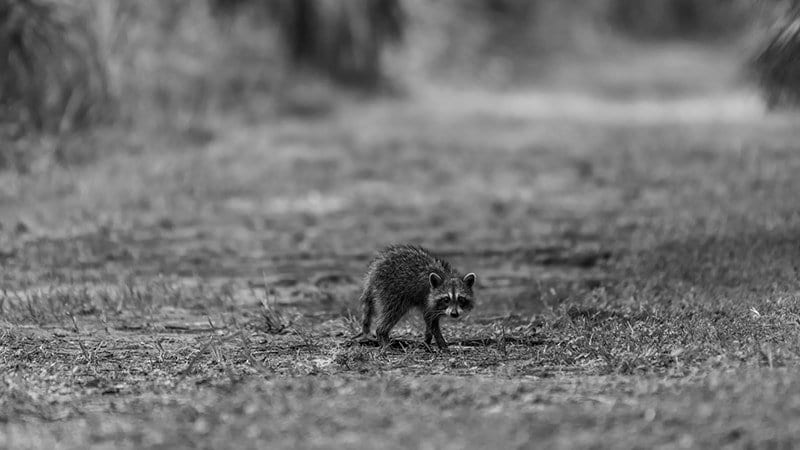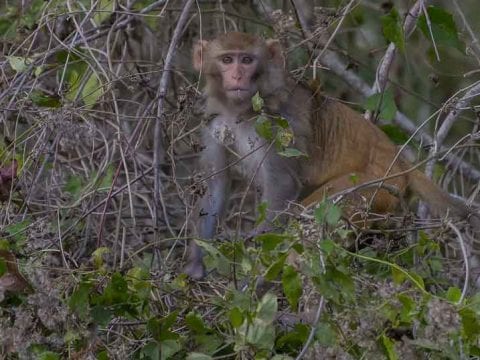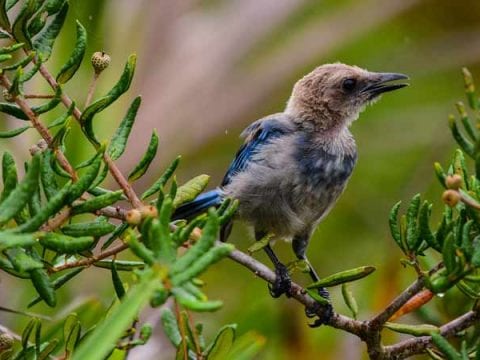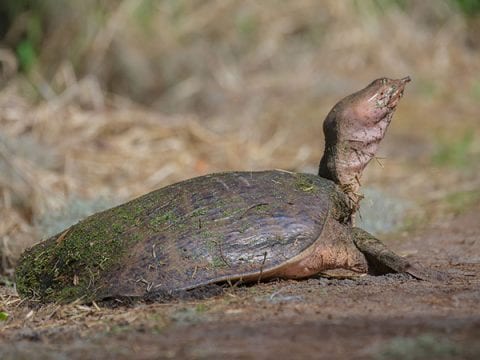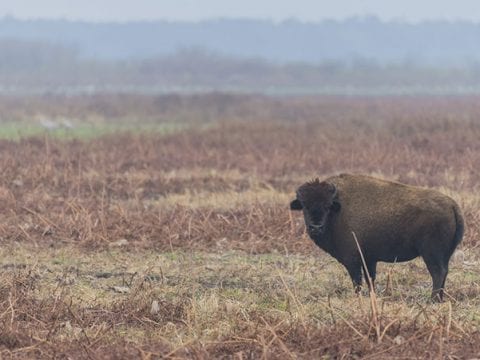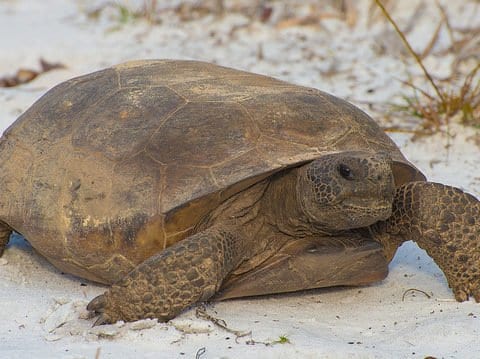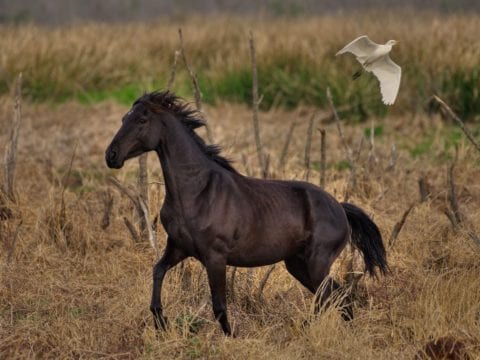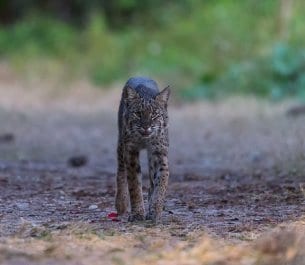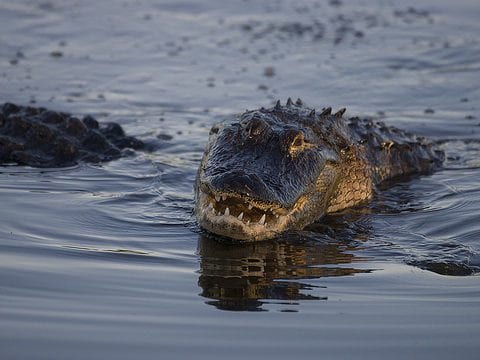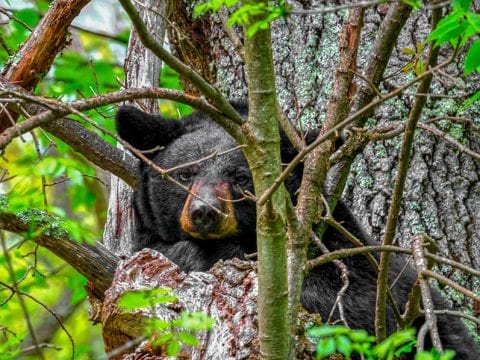Table of Contents
My Experience With Raccoons
I see raccoons almost every time I’m hiking in Florida. I once ran into a raccoon mom and her 4 babies along the trails rooting for food. The trail I was on was a long one and on both sides there was swamp water filled with alligators so I had no place to move to. As I saw the group coming my way, I stood as far off the trail as possible and stood very still to let them walk by. They quietly walked by me and didn’t pay me much attention. They were wild and hungry and I wasn’t a threat to them.
Everyone I talk to about raccoons has a bad perception of this animal. I compare them to cats. Each one has a personality and is hungry and, like any wild animal, you want to keep your distance and show them respect.
A couple of things to note if you see a raccoon:
- Not all of them have rabies. I see raccoons during the day time hours all the time and there is nothing wrong with them. They are mostly searching for food.
- If you see a mother with babies, leave the area or give them as much distance as possible – mothers are very protective
- Don’t corner them and this applies to all wild animals.
- If you see one on the trail, try to give them space. If you are unable to, stand still and let them pass.
- Check for nests and babies before you cut down a tree in your backyard. If you frighten a mature raccoon off that has nested near your house, there are most likely babies nearby.
- If you find abandoned babies, call a wildlife rescue. Babies rely on milk from their mother, they won’t survive if they don’t have it. A rescue will tend to them until they can be released back into the wild.
Dogue Hollow Wildlife Sanctuary
I attended the Eagle Festival in Mason Neck State Park a few months back and stopped at a booth dedicated to rescuing, rehabbing and releasing raccoon back into the wild. They are the Dogue Hollow Wildlife Sanctuary. I was hooked by the pictures and video they produced on their Facebook page and I offered to come out for a visit and film their little ones. I have visited the sanctuary twice now and plan on visiting again to donate more food.
The goal of the sanctuary is to get abandoned raccoon babies back into good health and in a lot of cases, get them to the age where they don’t rely on milk and can start eating solid foods, so they can be released back into the wild. I was very impressed with the dedication that it takes to maintain 65+ rescues that are in need of care.
If you are able to, please donate to this sanctuary by clicking here.
They could really use the help and I’ve personally visited them twice. They run a great operation.
Raccoon Facts
- Different names for Raccoon: Common raccoon, North American Raccoon, northern raccoon and coon
- Largest of the procyonid family
- Raccoons will eat just about anything but are partial to prey such as crayfish, frogs, insects, eggs, mice, aquatic creatures, fruits and vegetables
- They also like to dig in trash cans and can be found doing so frequently
- They can be found in forests, prairies, marshes, cities and residential areas
- Raccoons like to choose a dead tree, a log or a house attic as their den
- In northern parts of the United States, they will veg out during the spring and summer so that they can store up body fat for the winter. They will then hibernate in their den.
- There are six different species of raccoons but that most familiar is the Northern raccoon. Other species live on tropical islands
- Wild raccoons live about 2-3 years while captive raccoons can live up to 13 years
- A group of raccoons is called a nursery
- Despite their bad reputation, raccoons are harmless as long as they do not feel threatened or cornered. They have been found to be quite a nuisance in this regard.
- Based on deliberate introductions in the mid-20 century, raccoons are distributed across Europe, Caucasia and Japan.
- The scientific name for raccoon is Procyon lotor
- They are nocturnal creatures so they will normally be investigating trash cans and other things during the night in search of food
Identification
Curious and prone to shiny objects, raccoons are popularly seen throughout the United States. They have cute little bandit-style masks over their eyes, a gray body and cute, human-like hands. They also have a long, bushy tail with 4-7 black rings on it. Their hind legs are longer than their front legs making them appear as if they are hunched over as they walk or run. On each of their front feet, they have five dexterous toes, this allows them to grab food and other items. They are very shy creatures but are extremely active at night.
The video above was taken just before feeding time. They get excited and make a lot of noise when they know food is on the way.
Behavior
Raccoons have two very distinctive traits, their front paws and their facial mask, which best resembles a bandit’s mask. Due to the mask, a raccoon has been popularly associated to mischief. Not just for looks however, the mask also reduces glares and increases night vision. They travel on all four legs but can stand on just their back legs to get a close examination of something. Due to their short legs however, they usually cannot jump great distances and they can travel 9.9-15 miles per hour. They have a dual cooling system that helps to regulate their temperature.
They are noted for their intelligence and research suggests that they can remember the solution to certain tasks for up to three years. Raccoons are nocturnal and therefore hunt for food at night, they are omnivorous. Their diet consists of 40% invertebrates, 33% plant life, and 27% vertebrates.
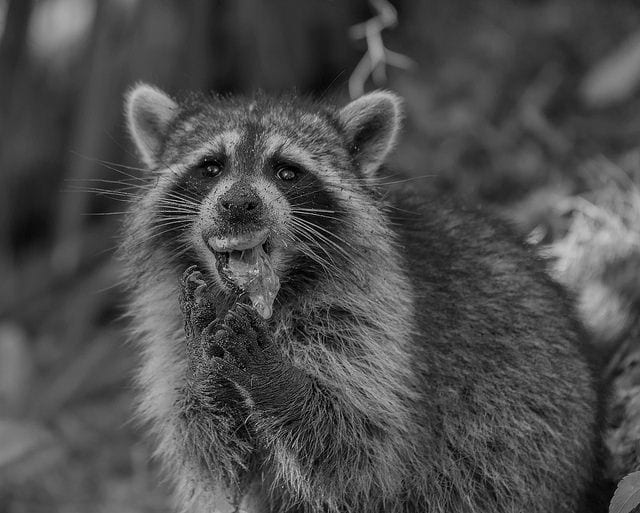
On one of my hikes, I hiked along with a family of raccoon and filmed them as they found eggs buried by a Florida softshell turtle. The raccoons proceeded to dig up the eggs and make a meal out of them. This is the look I got from one of them mid chew.
Raccoons were thought to be very solitary but research shows that they like gender-specific social behavior. Therefore, females generally share a common area while males usually live together in groups of four. This helps to protect against the invasion of other animals. A raccoon’s home range runs about 1 mile in size.
Originally, raccoons stayed in areas with mixed forests but due to their ability to adapt the have extended out to mountainous areas, urban areas and even marshes. Throughout the years, they have even been found rummaging through garbage cans in residential areas.
Another distinctive trait for raccoons is the dousing or washing of their food. They always seem to wash their food with their hands before they eat it. This can also appear like they are examining their food with their hands.
Raccoons have a life expectancy of over 20 years. However in the wild their life usually only lasts about 1.8 to 3.1 years. Two major causes of their death are due to hunting and vehicular injury.
Size
Length
- 16”-28”
Height
- 12”
Weight
- 8-20 lbs. (Males can weigh up to 60 pounds)
Reproduction
Raccoons usually mate between late January and mid-March. During this time, males roam their home range in search of a female. Copulation, which includes foreplay can last up to an hour, and is repeated for several nights. A study in Texas from the 1990-1992 mating season showed about 1/3 of all females mated with more than one male. If a female does not become pregnant or if she loses her kits early, she will sometimes become fertile again somewhere between 80 to 140 days later.
Males have no part in the raising of the babies and the kits are blind and deaf at birth. Their ear canals open between 18 to 23 days after birth and their eyes open only a few days after birth. Once the kits weigh about 2 pounds, they will start to explore the area around their den where they will find their own food. They begin weaning from the mother at this point, usually about 16 weeks after birth. Many females will stay close to their homes while males will move more than 12 miles away. This is an instinctive trait for raccoons and prevents inbreeding.
Female raccoons will have 1 to 7 kits in early summer. They have a 65-day gestation period. They spend their first two months within the confines of a tree hole. The kits are raised by their mother until they disperse in the late fall. Afterward, they move to the ground where the kits began to explore the world for themselves.
Seven of thirteen vocal calls are used in communication between a mother and her kits. One of them is a twittering that comes from newborns.
Q&A
Can raccoons climb?
Yes! They are very good climbers and you’ll often find them nesting in trees.
Can raccoons be pets?
Raccoons shouldn’t be pets as they are wild animals. In some cases where they are injured or in need of help, a sanctuary will step in and care for them. It’s advised not to have one as a pet.
Can they open doors?
Yes! You will find they are very smart and will figure many things out using their paws. Not only can they open doors but trash cans as well in search of food sources.
How fast can they run?
Raccoons can run very fast. They run 9.9 to 15 miles per hour.
How big can they grow?
An average adult raccoon can grow to 20 pounds. Males sometimes grow bigger, up to 60 pounds.
Can they see in the dark?
Yes! They are mostly out at night searching for food and can see very well in the dark.
Are raccoons nocturnal?
Yes, they are nocturnal. You’ll find them moving about searching for food sources during the night. However, it’s not uncommon to see them out during the daylight hours as well.
Are raccoons considered rodents?
Raccoons are mammals and not considered a rodent.

